I never would’ve thought that a National Quilt Museum would make the list of “top coolest things I’ve ever seen.”
But here we are. I’m going to say it.
The National Quilt Museum in Paducah, KY is on my list of top coolest things I’ve ever seen.
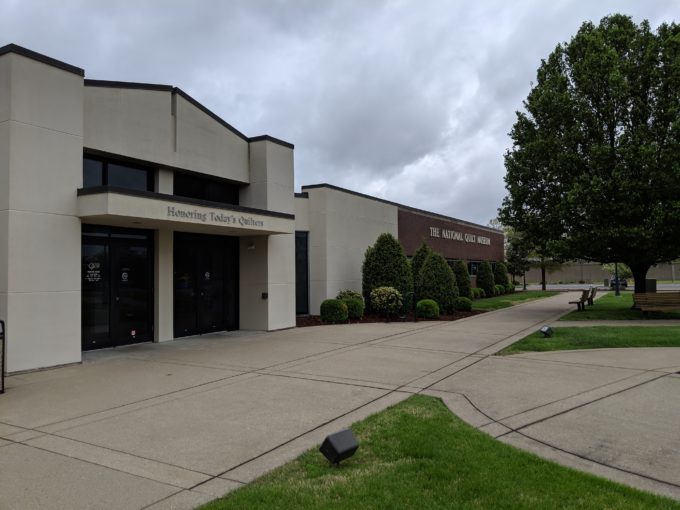
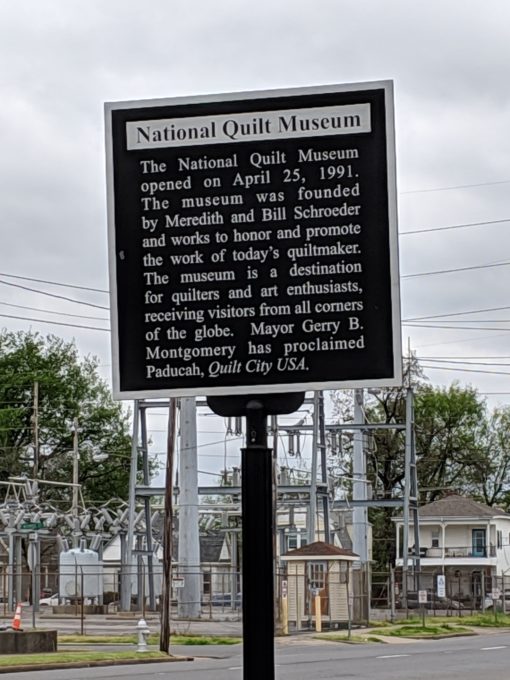
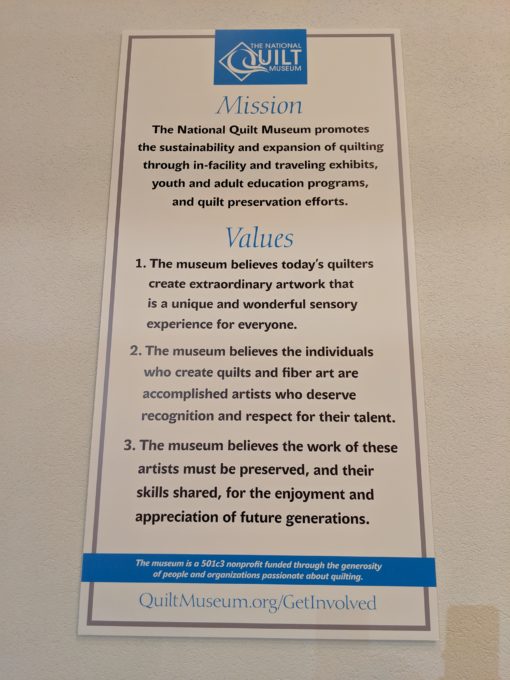
When I arrived, Connie gave me a warm welcome, set me up to see the museum and shared the name of a docent to talk to if I had any questions. Pattie was the docent’s name and she was my quilting fairy godmother. She kindly answered all the questions for a sewing and quilting novice and made me feel welcome.
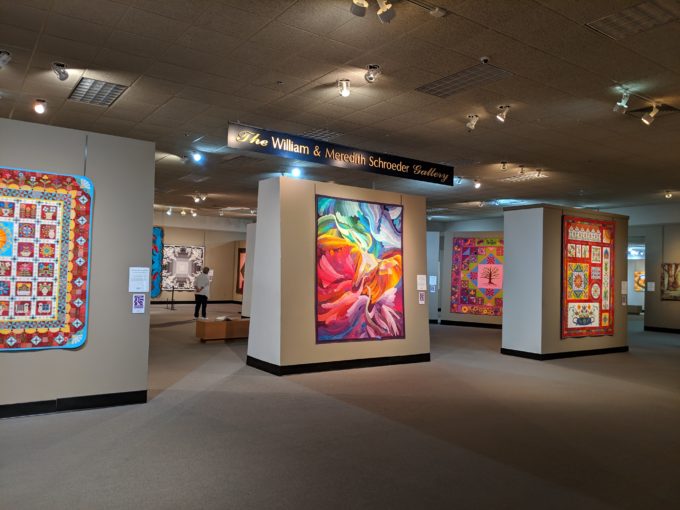
I learned a few really interesting things about the art of quilting. Some of which BLEW MY MIND.
There’s hand stitching for quilts and machine stitching, as well other methods that can either be done by hand or machine. I pictured the really intricate quilts to be ones that were machine sewn. I was wrong. Some of my favorite, most intricate, quilts were hand sewn. Here’s one expert example of hand stitching.
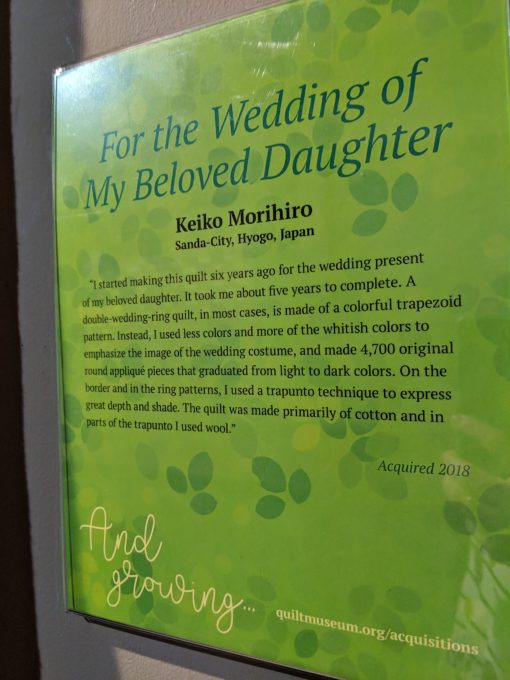
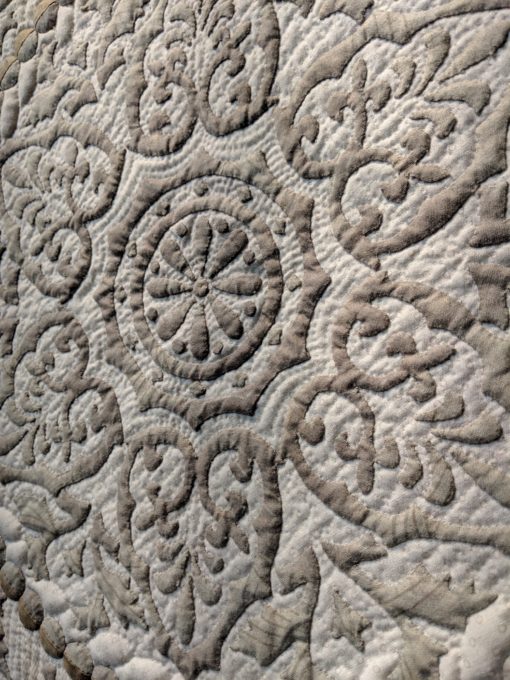
There are different types of sewing methods; one of the common ones listed was the use of a long arm machine. I figured that if something was machine sewn it was more automated than hand stitching, but that’s not really true. The quilter is still guiding the intricate patterns that are being created by the machine.
Here’s a video of a long arm machine and how it works. Around 3 minutes in it shows how the machine works:
The main way to tell the difference between a hand stitched versus a machine stitched quilt is that a hand stitched quilt has spaces between the stitches, even if it’s microscopic. The machine stitched quilt doesn’t have a space between stitches. The sign of a truly skilled hand quilter is one whose stitch spaces can only be seen with a magnifying glass rather than the naked eye.
Some of the quilts on display, particularly in the Stories of Western Africa by Hollis Chatelain exhibit were on hand painted fabrics.
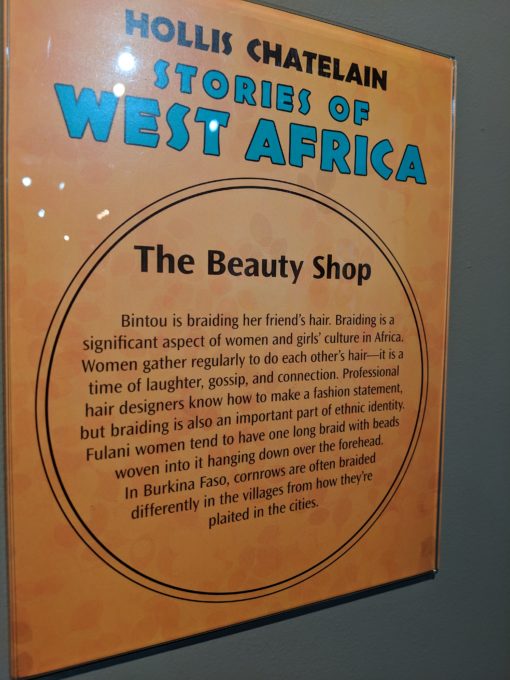
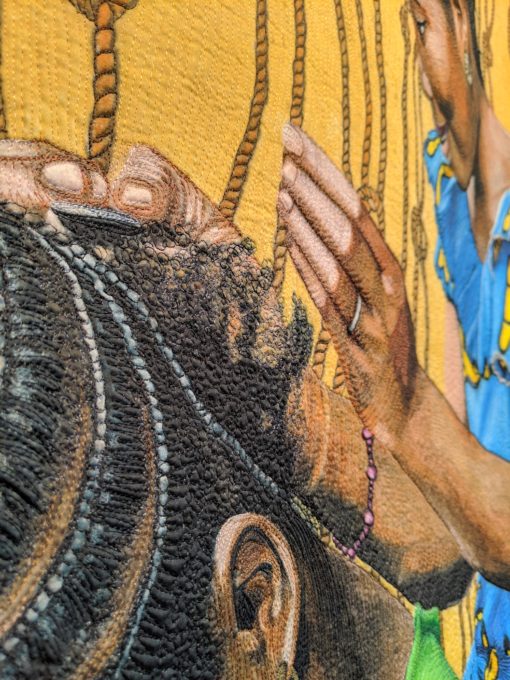
Quilting, as it’s seen at The National Quilt Museum can only be described as an art form. It’s incredible, intricate and in some cases requires years of work to produce the beautiful tapestries that are on display. Honestly, when you see some of these quilts you’ll think they’re photographs or intricate paintings until you get close enough to see all the stitches.
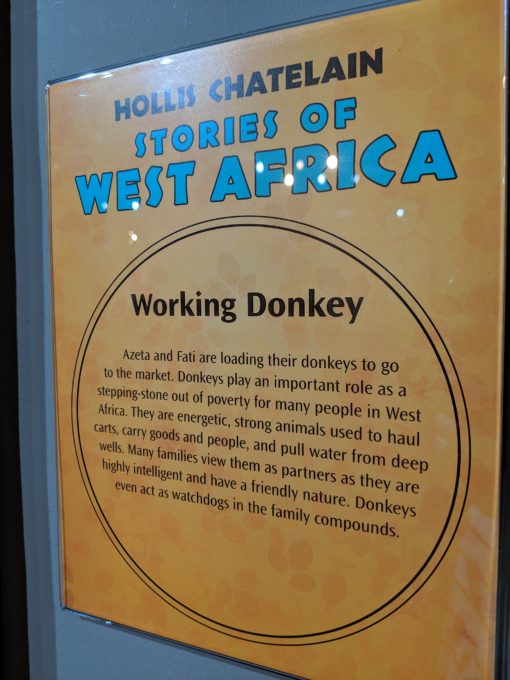
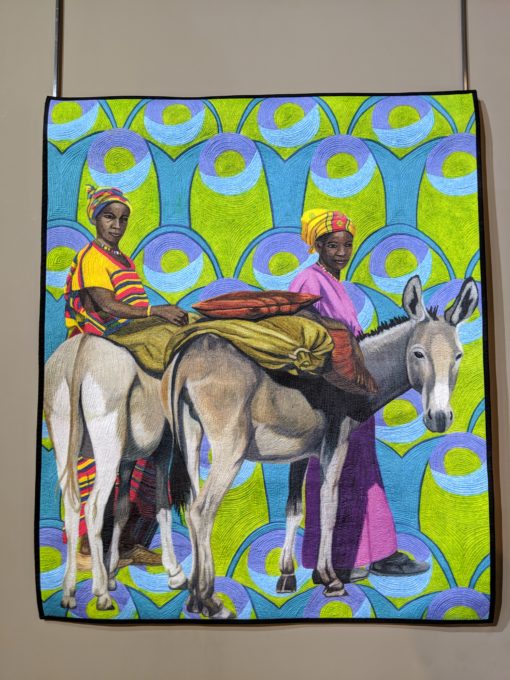
Here’s a photo journey through the museum. When you see how many photos I’ve included you might say, “But Shae, you’ve shown us everything there is.” First off, no, I haven’t. The National Quilt Museum is a good size, but they pack it with so many quilts that this is only a small portion of what I saw.
The National Quilt Museum is also constantly moving new exhibits through and rotating the quilts they have in storage for their ongoing exhibits. So you can visit in a month or two and it’s likely that many of the quilts I’ve put here will be gone, with new ones in their place. That keeps The National Quilt Museum in Paducah surprisingly fresh with each visit.
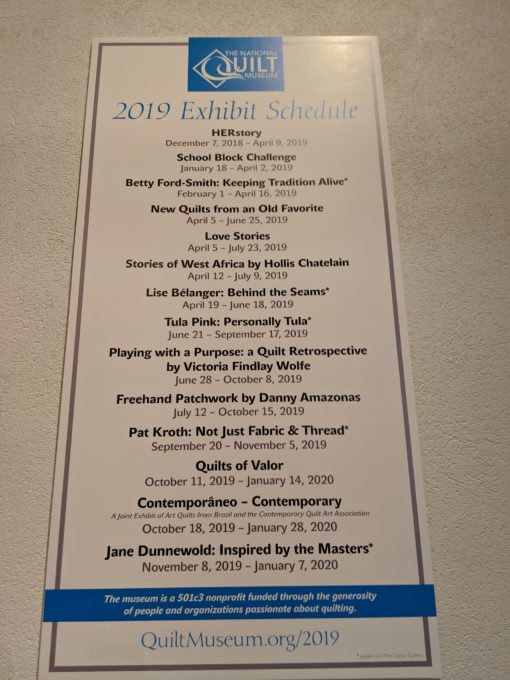
One of the traveling exhibits on display was The Stories of West Africa by Hollis Chatelain.
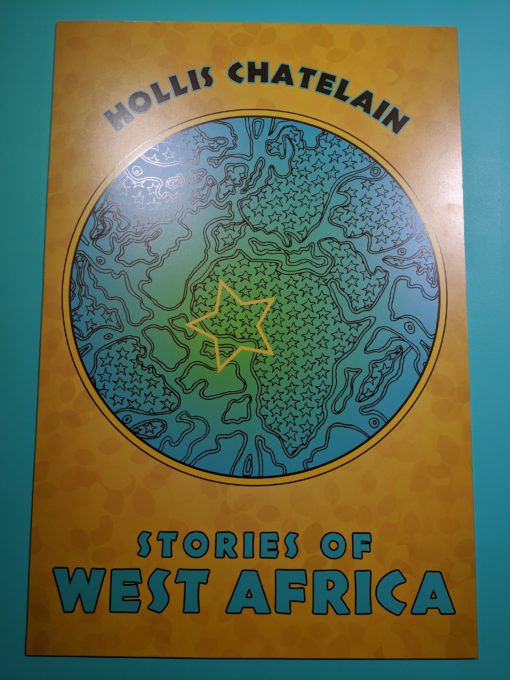
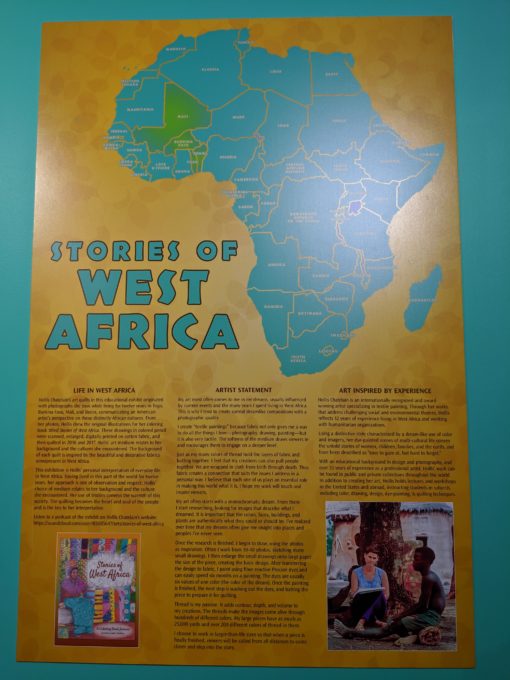
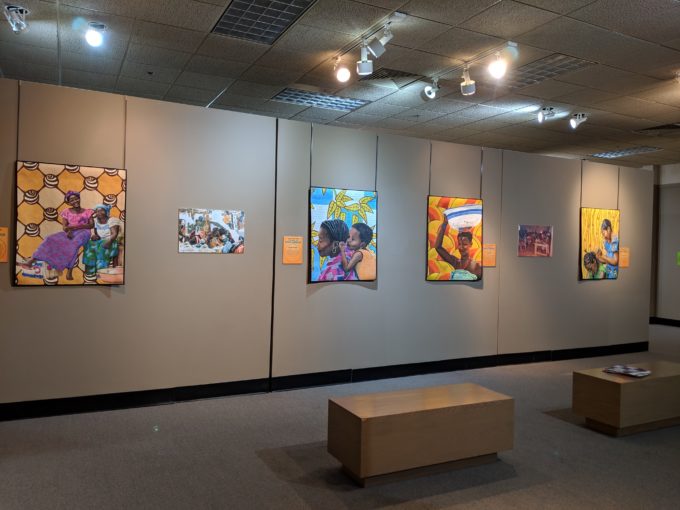
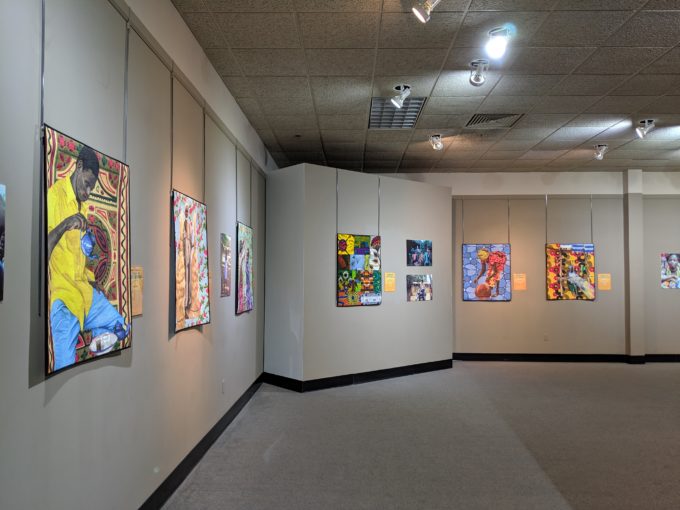
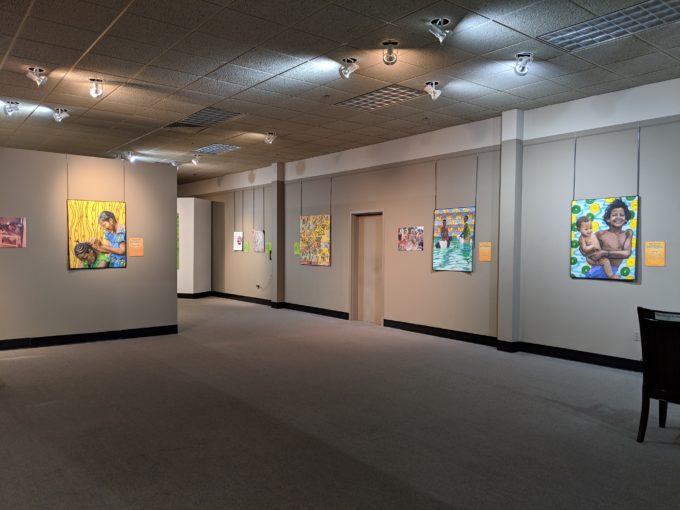
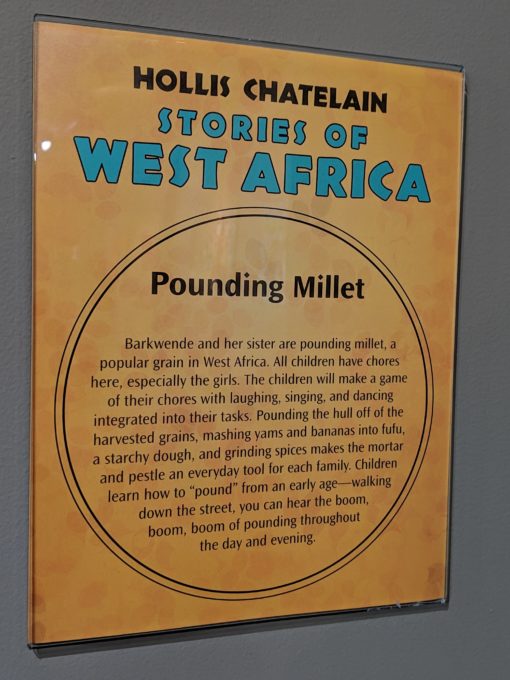
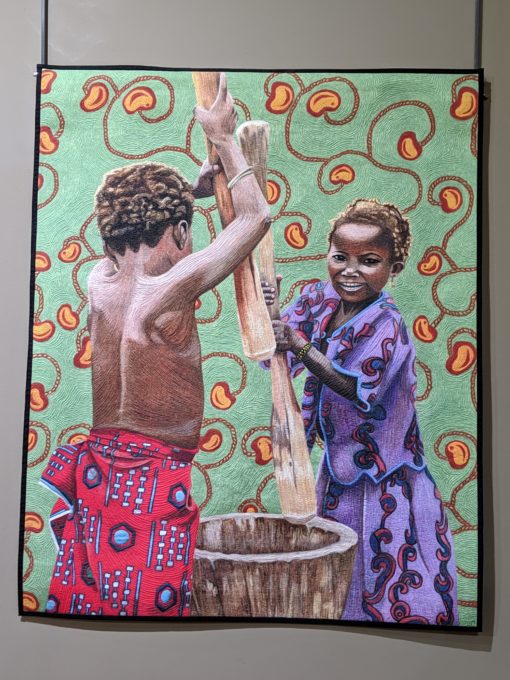
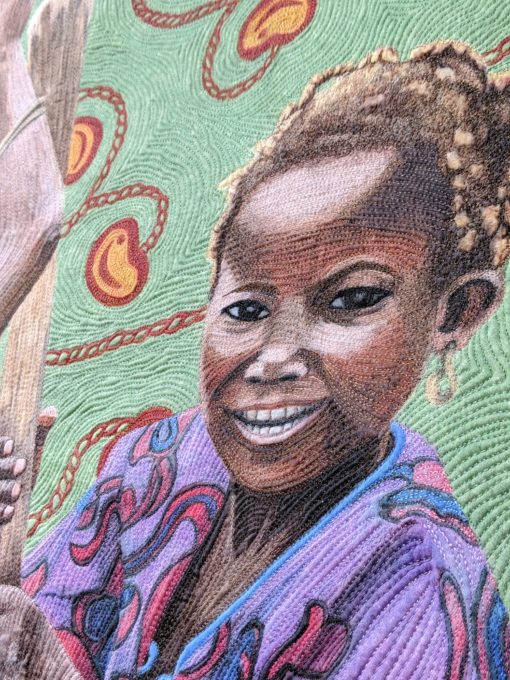

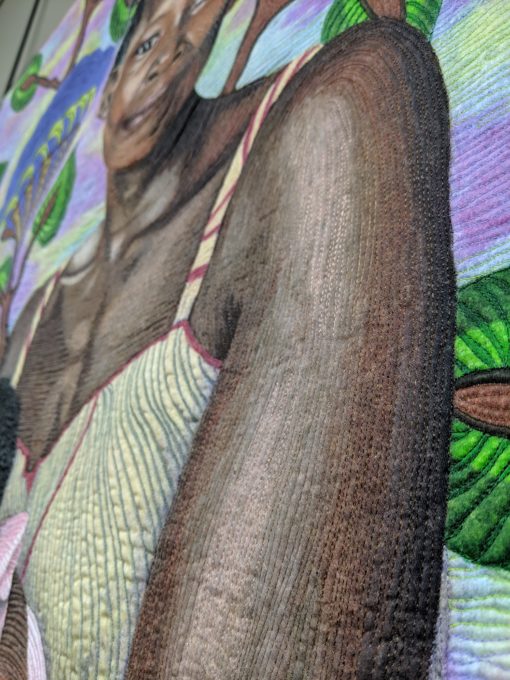
In this same area was an exhibit about how the collection at the National Quilt Museum is growing… and growing.
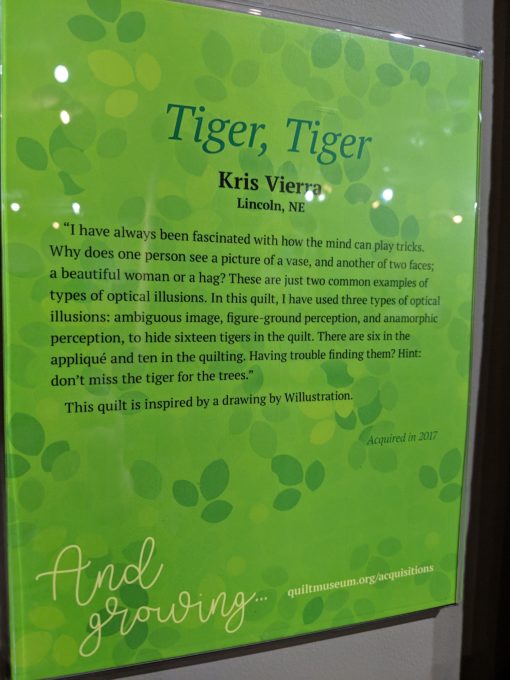
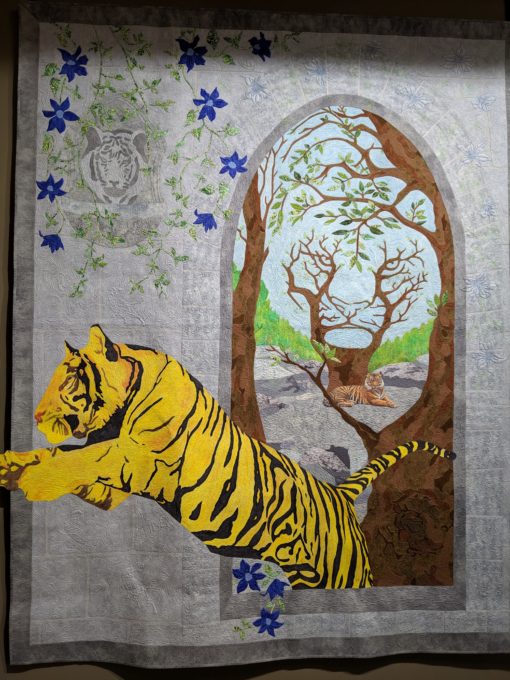
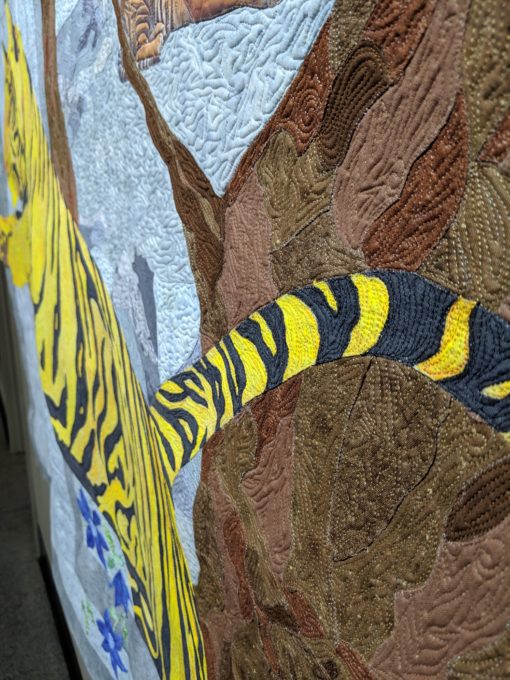
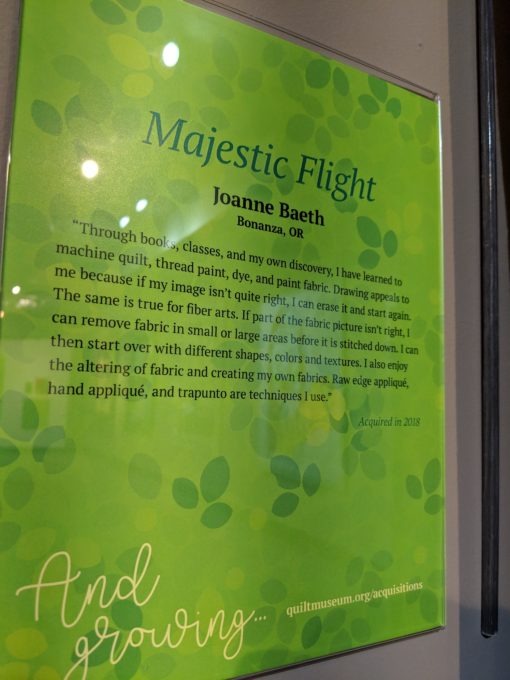
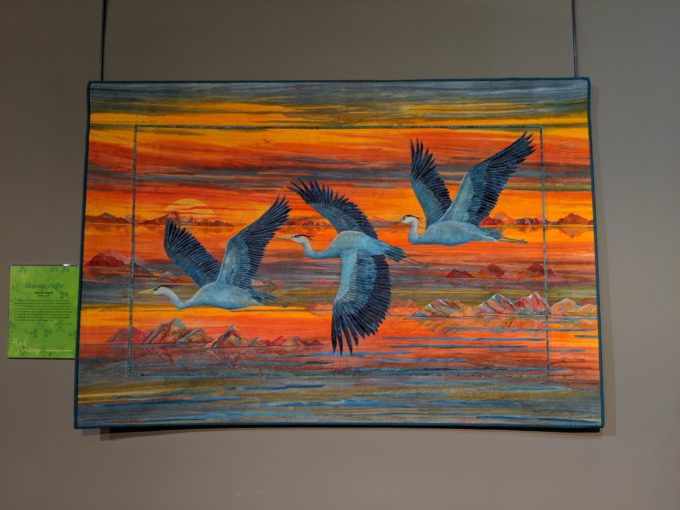
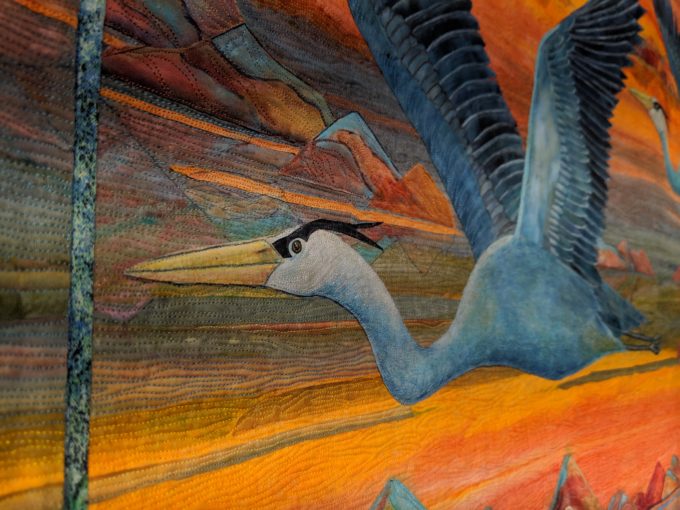
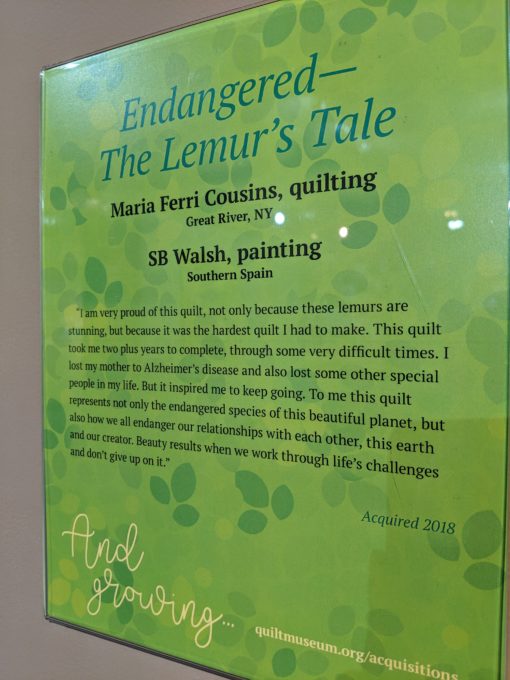
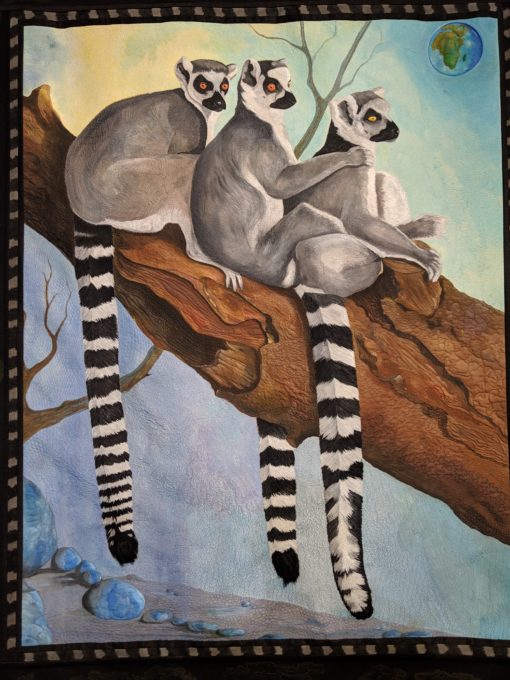
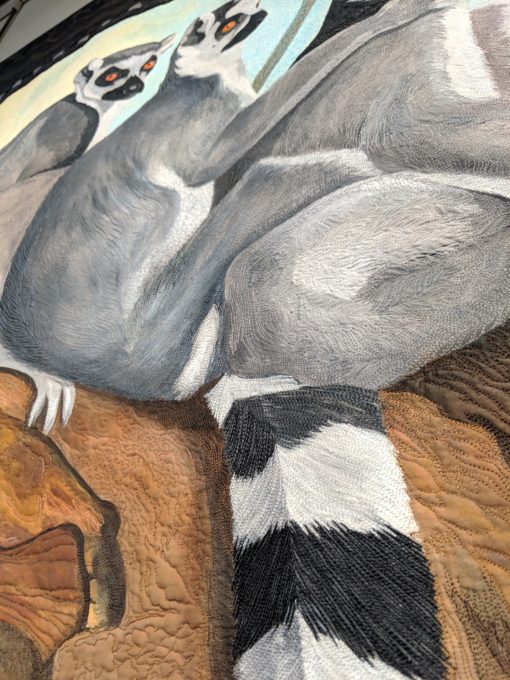
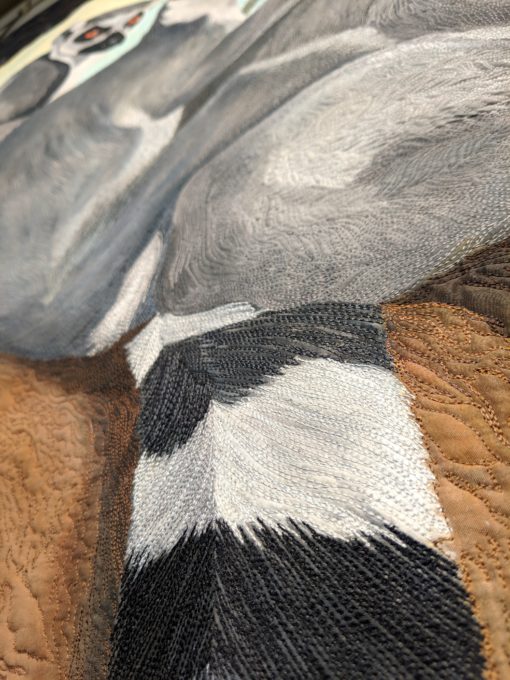
I made my through to another exhibit which is called Lise Belanger – Behind the Seams.
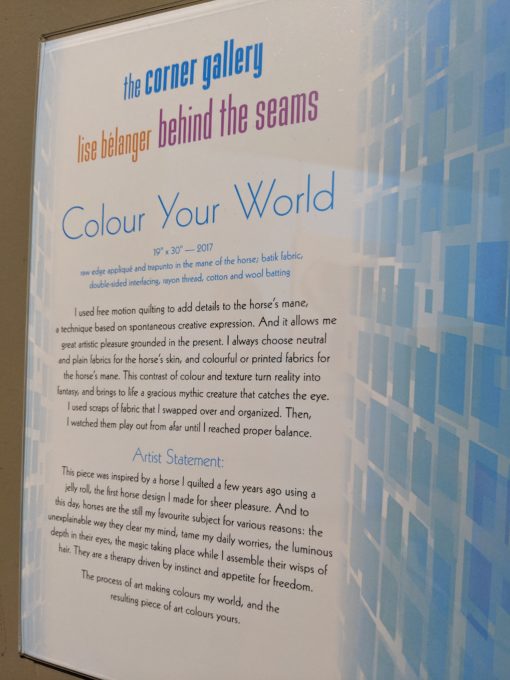
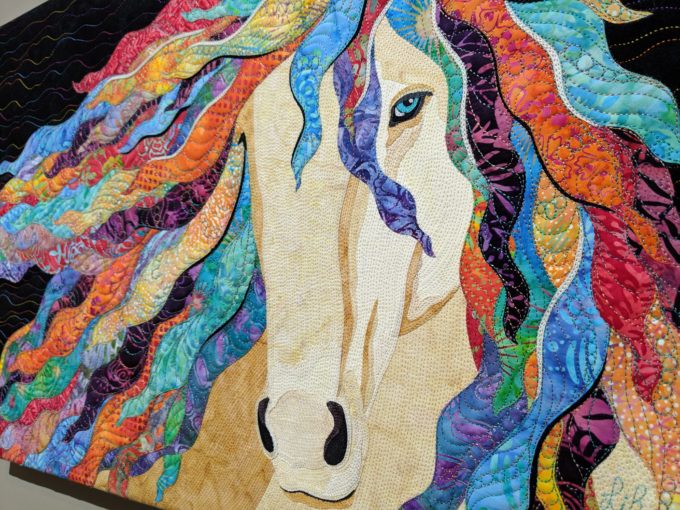
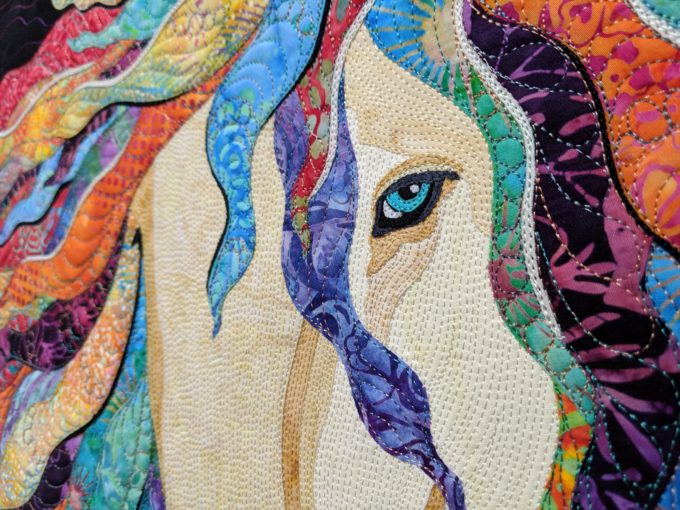
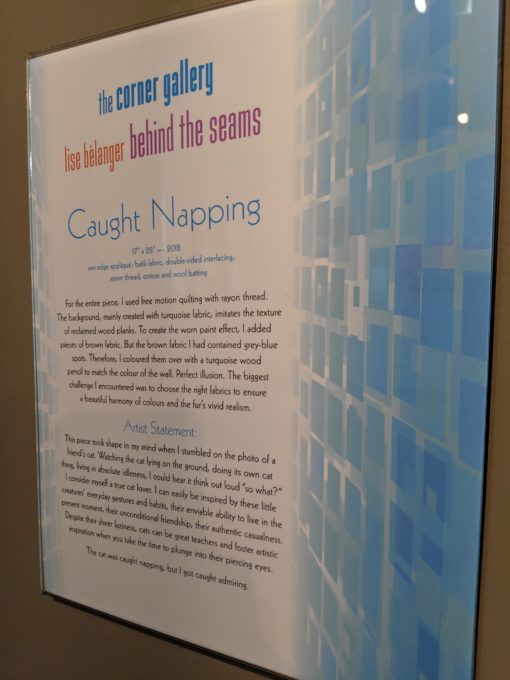
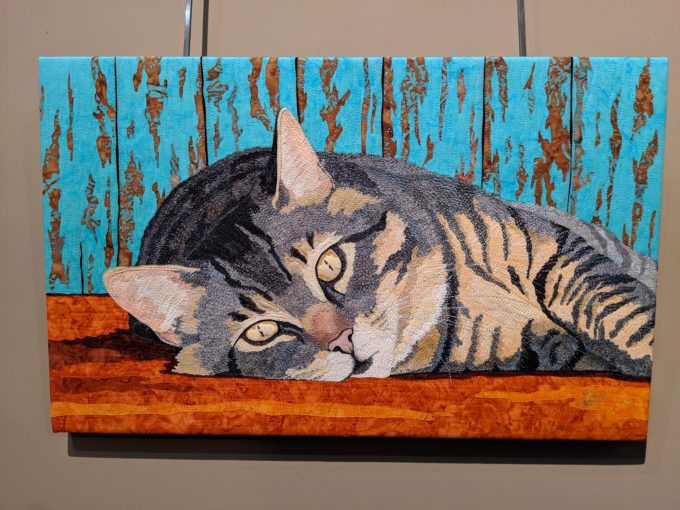
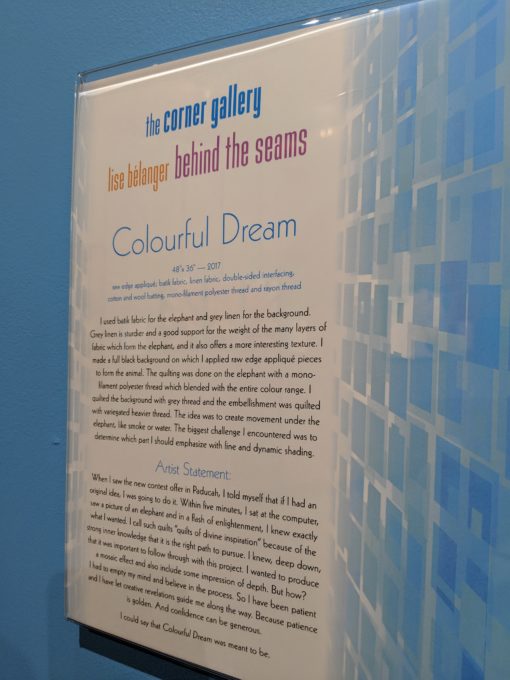
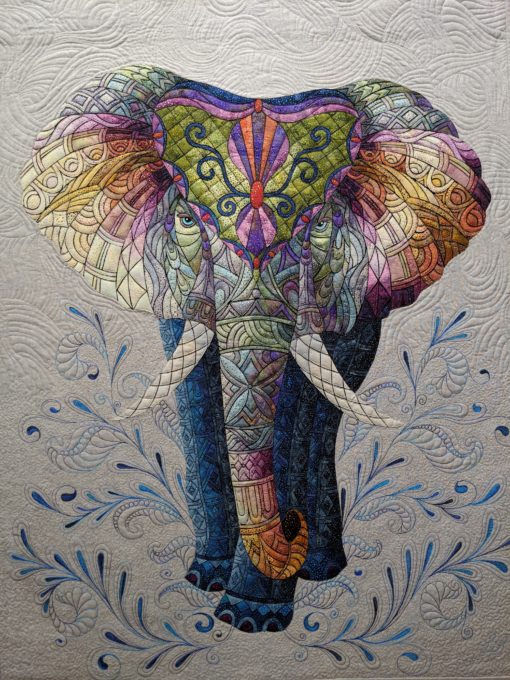
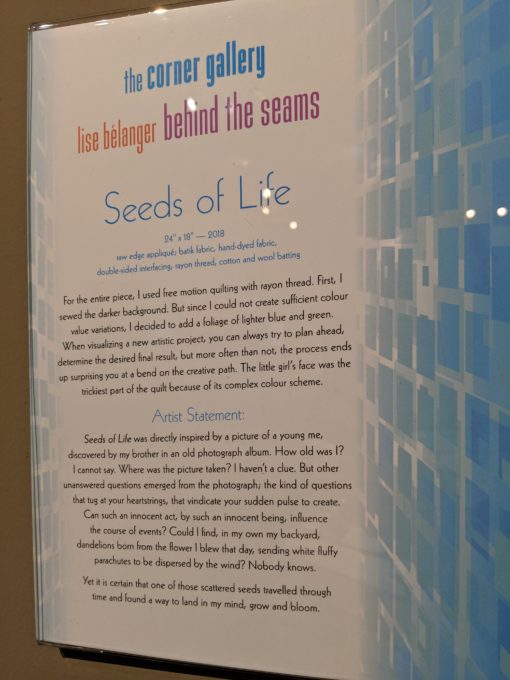
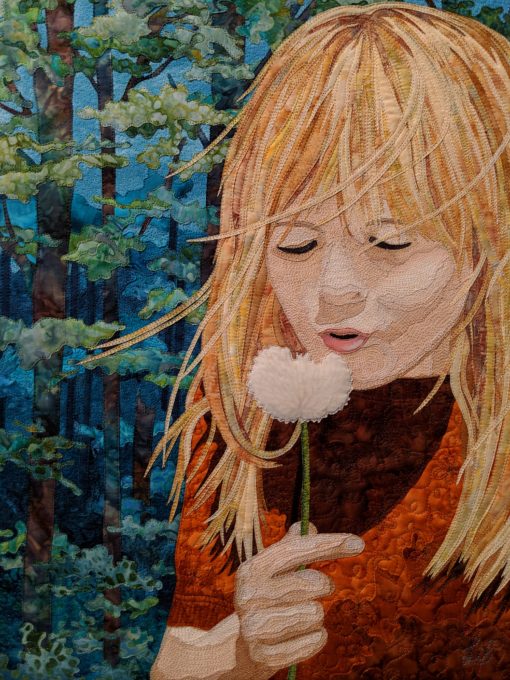
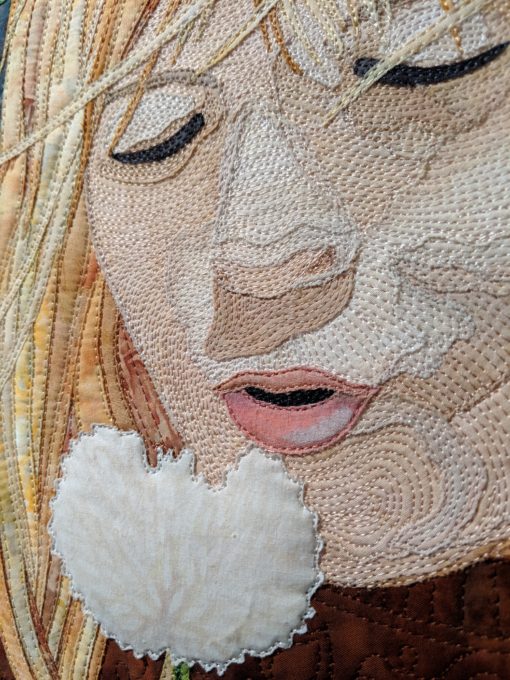
Everywhere you looked there were beautiful works of art.
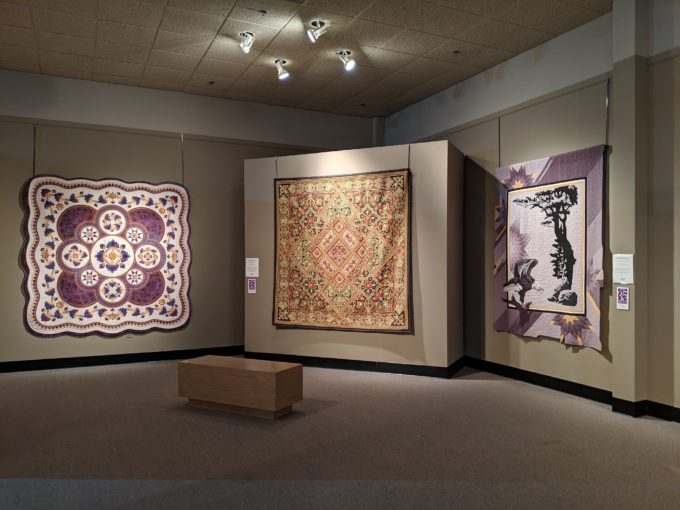
These are some of my favorites that I saw:
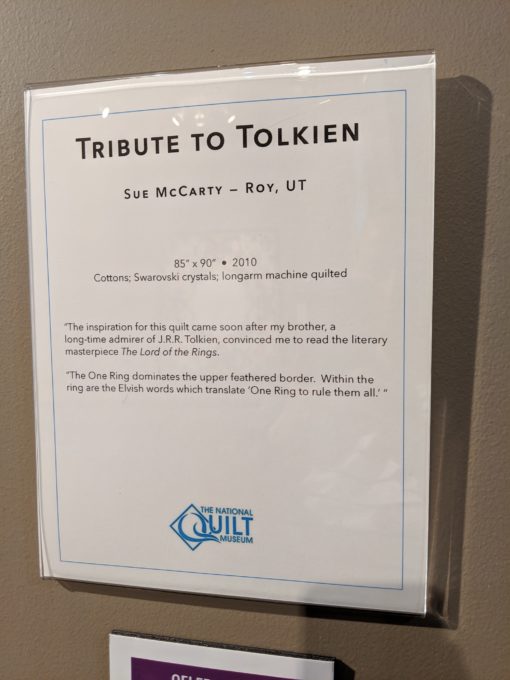
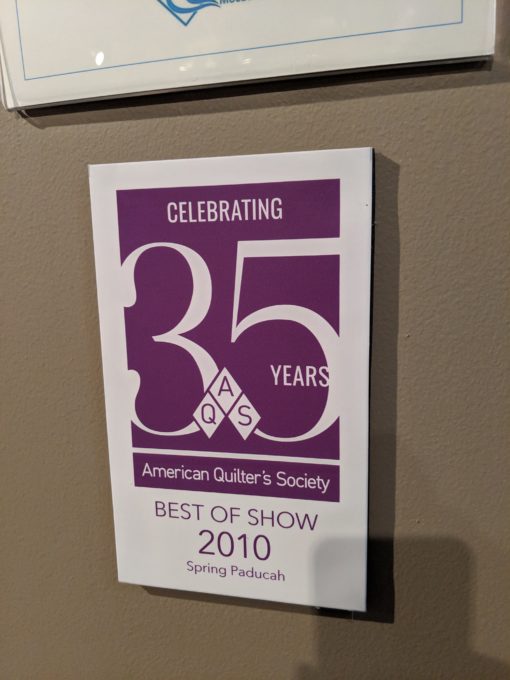
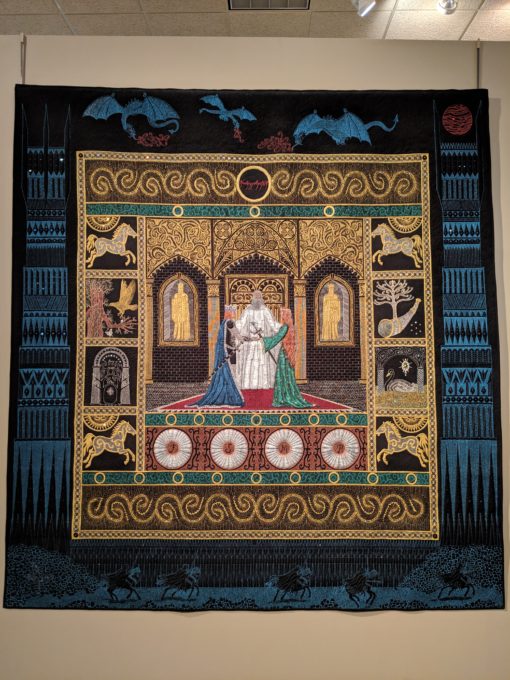
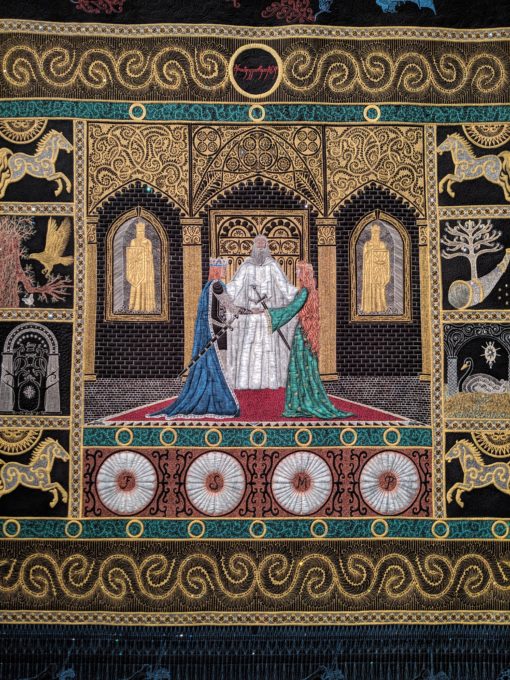
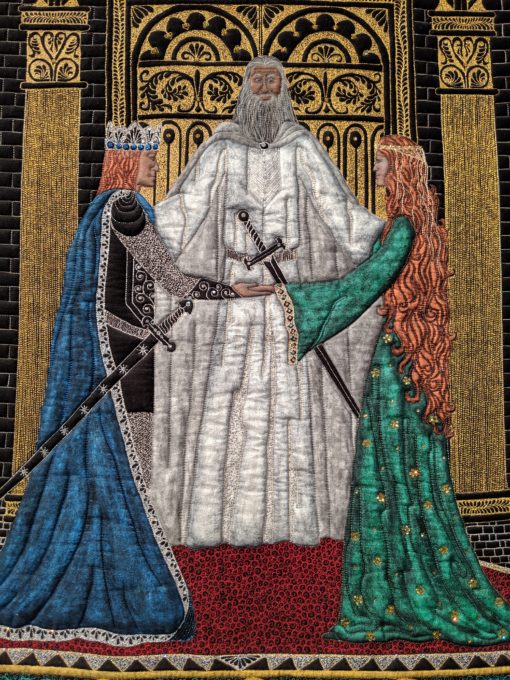
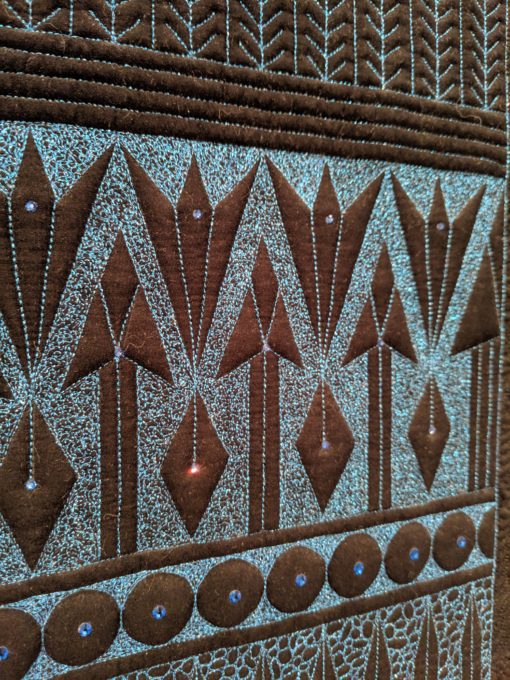
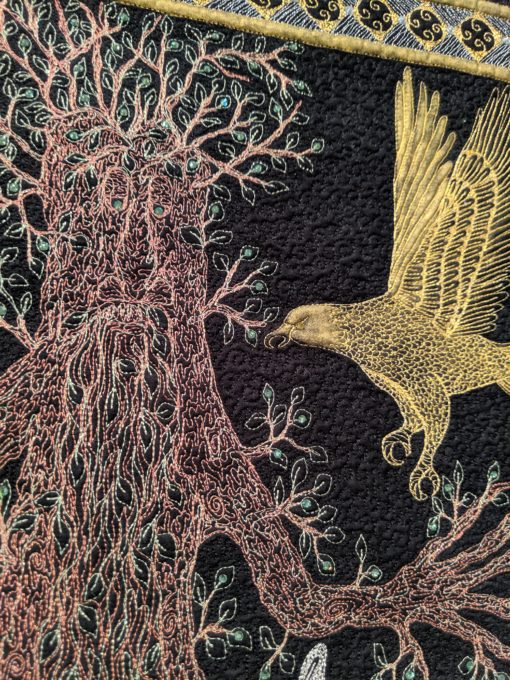
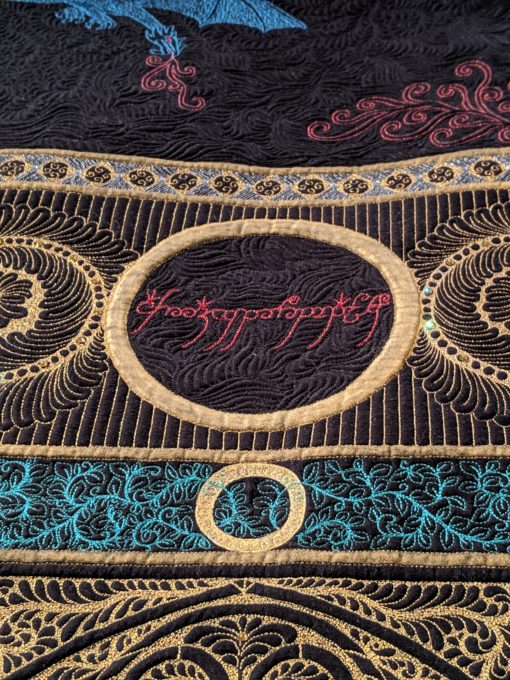
The following two favorites were HAND STITCHED!
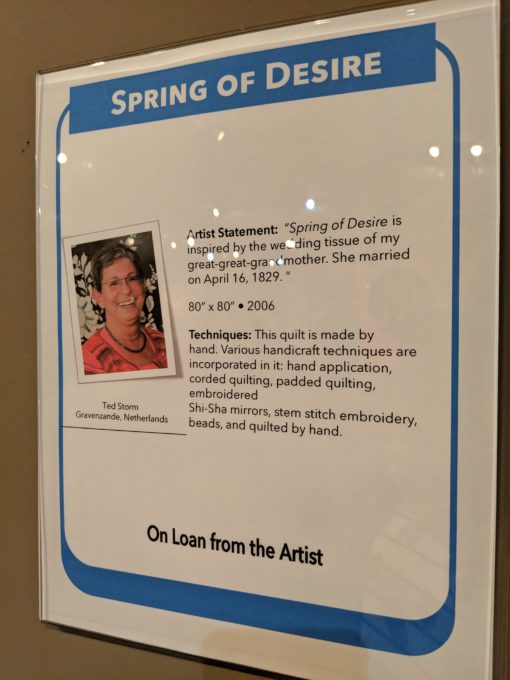

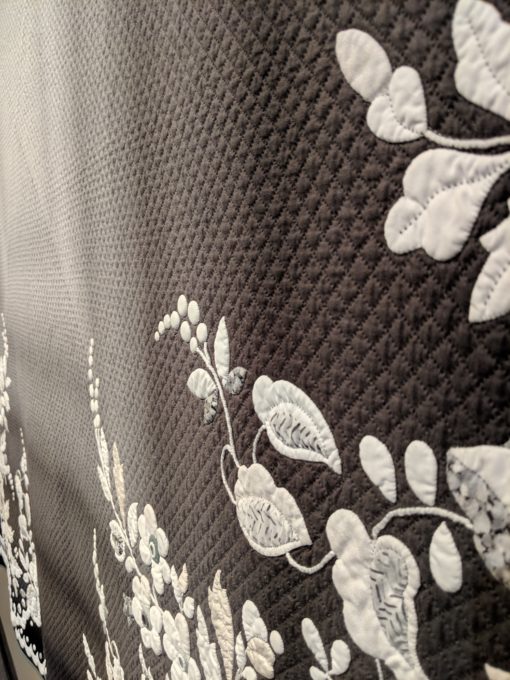
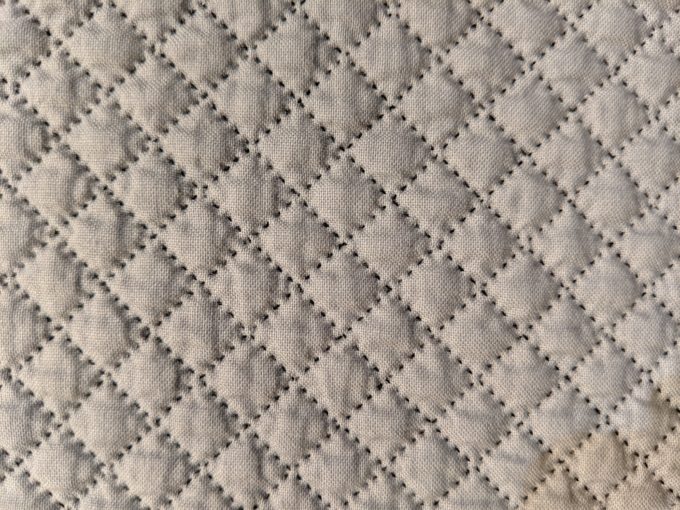
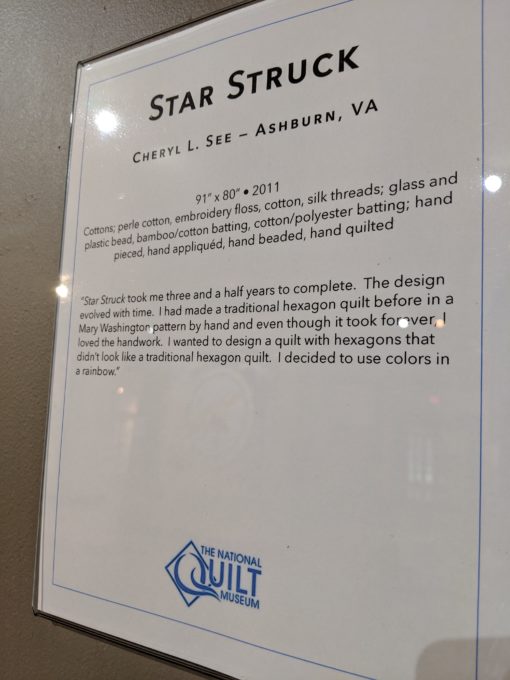
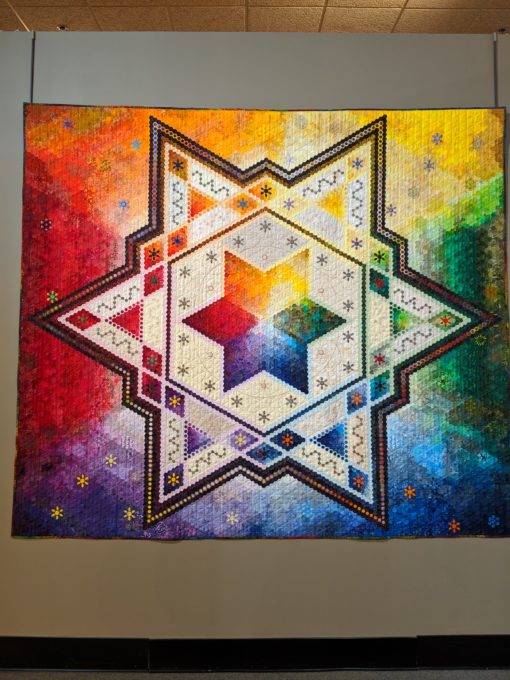
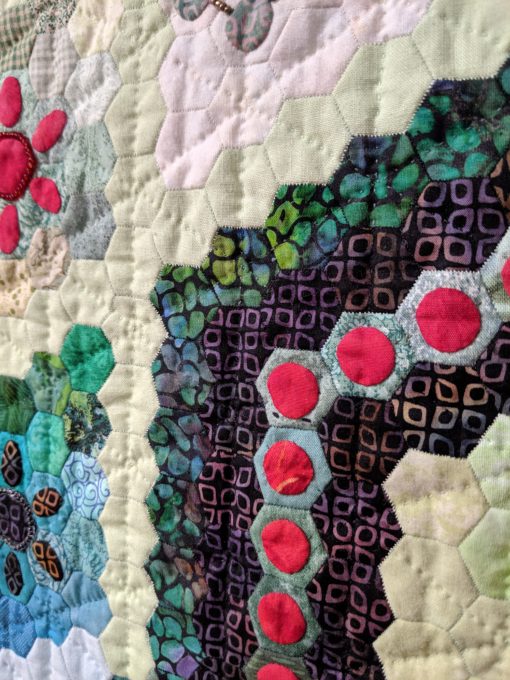
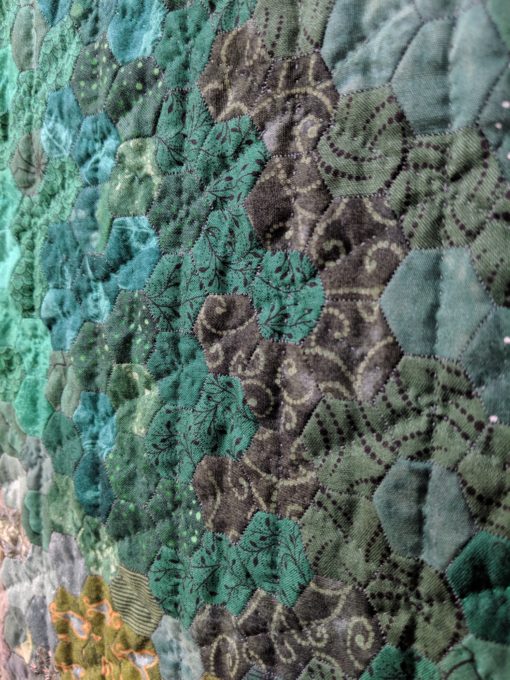
There was another traveling exhibit called Love Stories on display. It didn’t speak to me as much as the other displays, but here is what you can see.
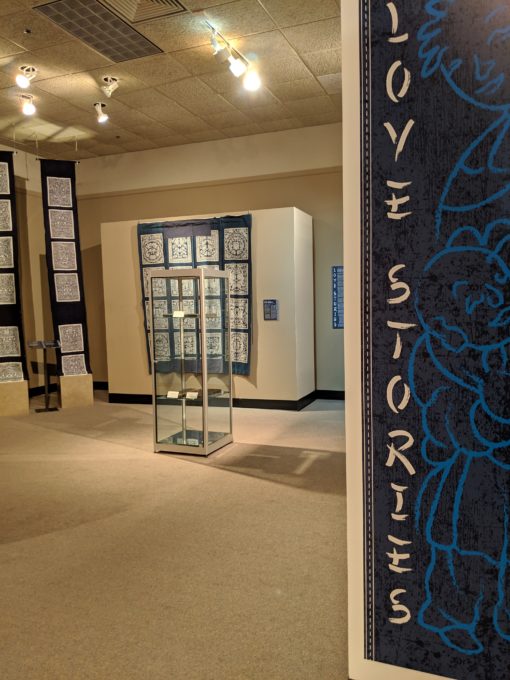
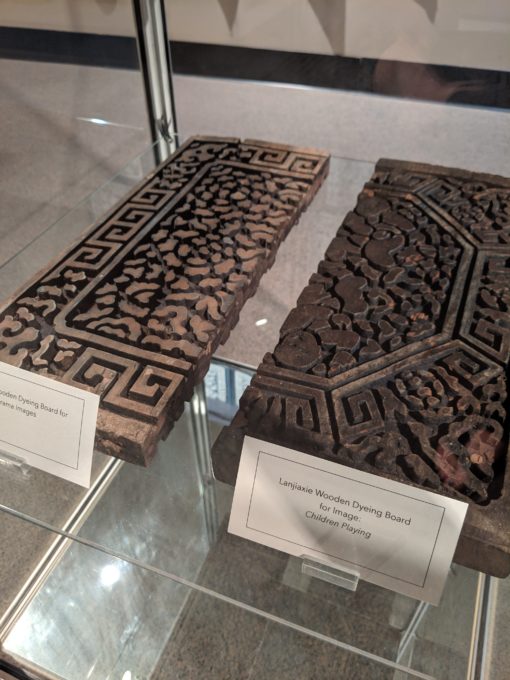
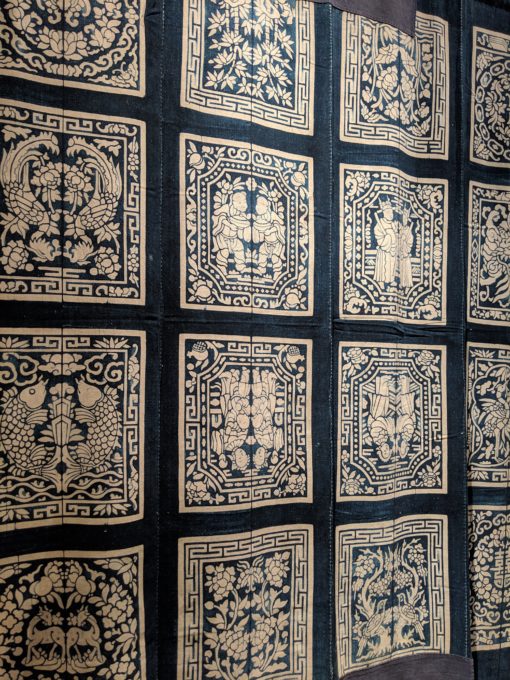
The far end of the museum, across from the Stories of West Africa exhibit, hosted an exhibit of the annual competition that the National Quilt Museum holds. Each year a new specific design or pattern is assigned and quilters have a specific amount of time to design and make a quilt for the competition.
This year’s theme pattern was Oak Leaf and Reel Patterns. Entrants were tasked with taking this “old” pattern and making it new.
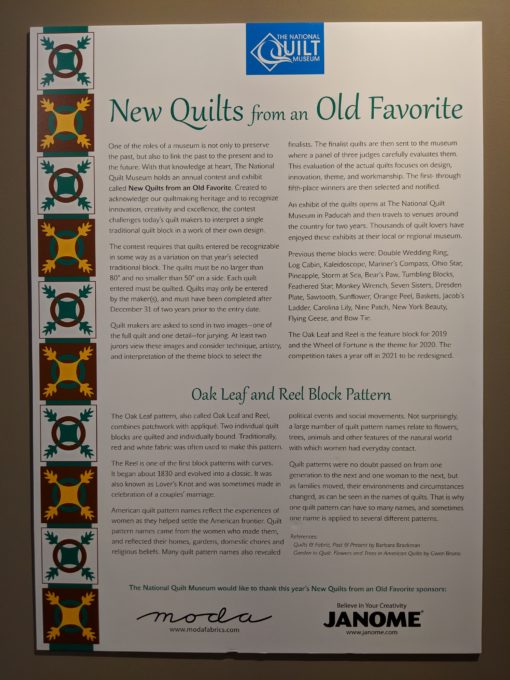
An antique quilt with the Oak Leaf and Reel pattern.

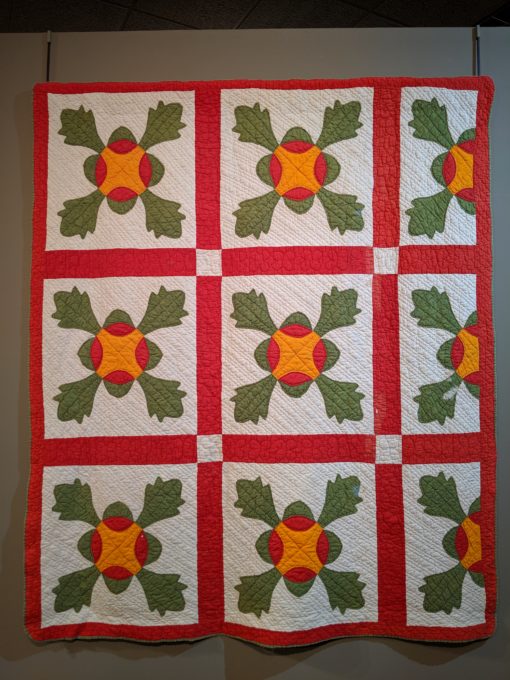
These are the shapes the judges are looking for:

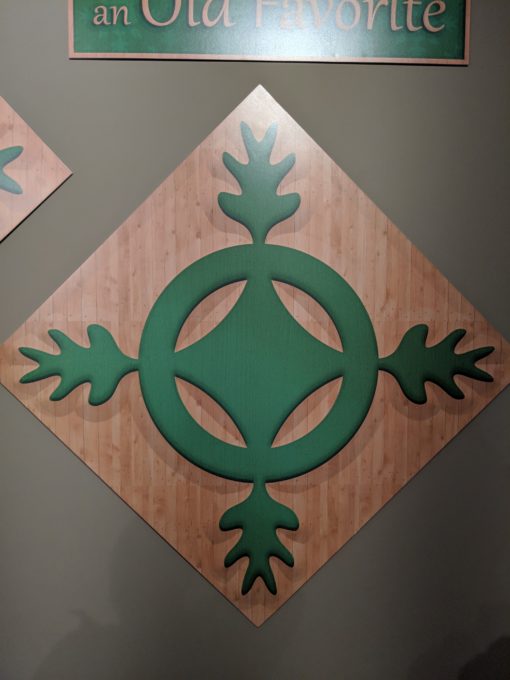
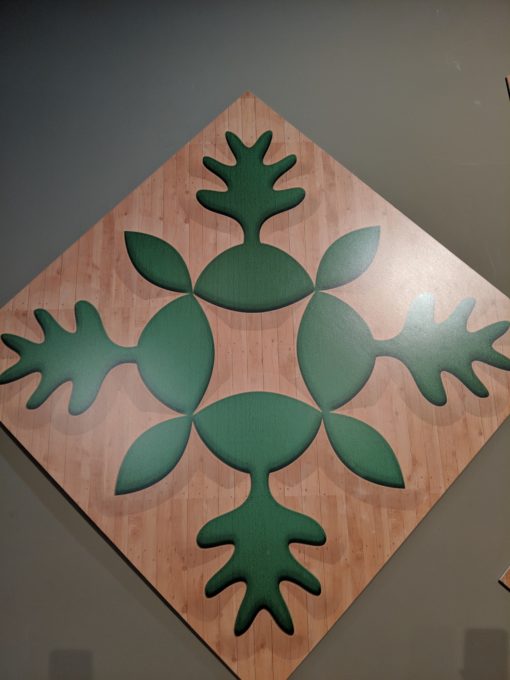
Here are just some of the winners and entrants. Can you find the Oak Leaf and Reel pattern?
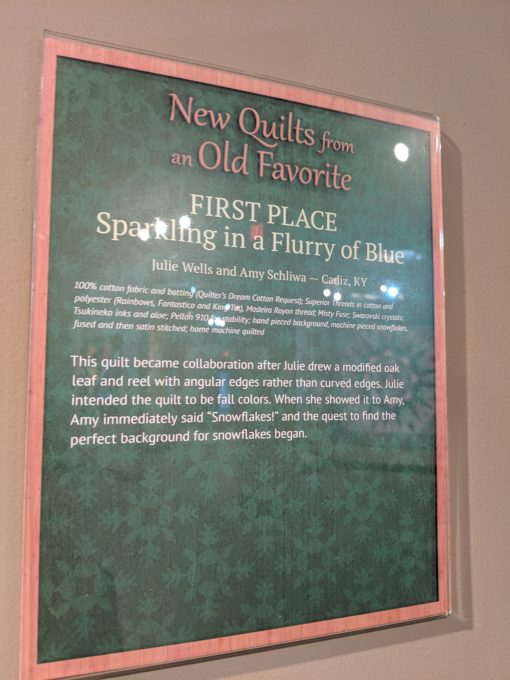
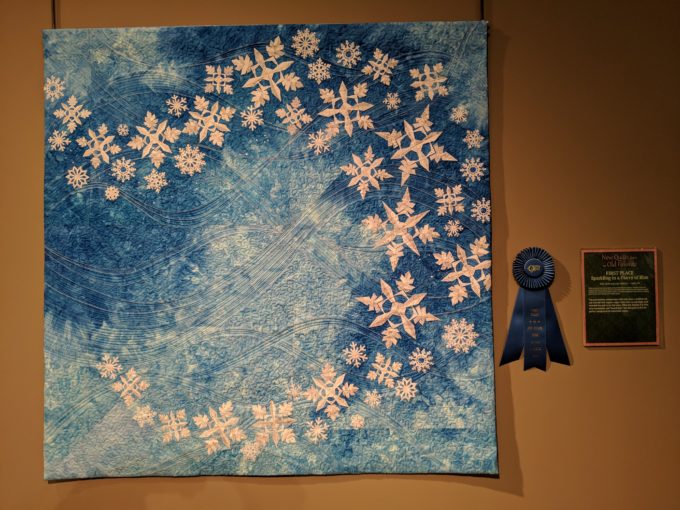
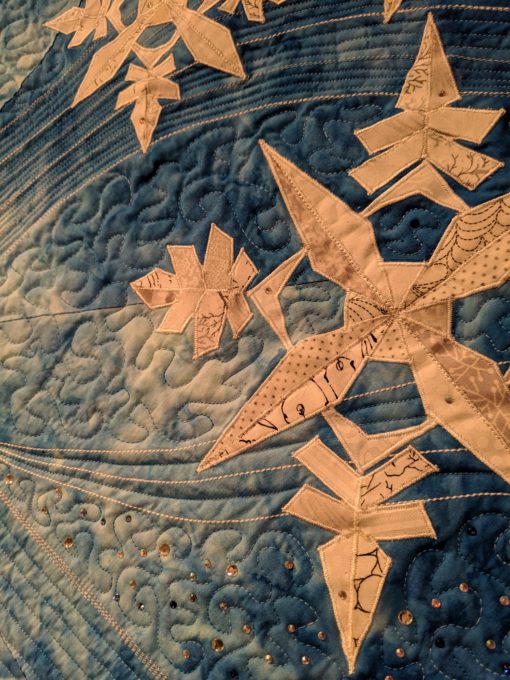
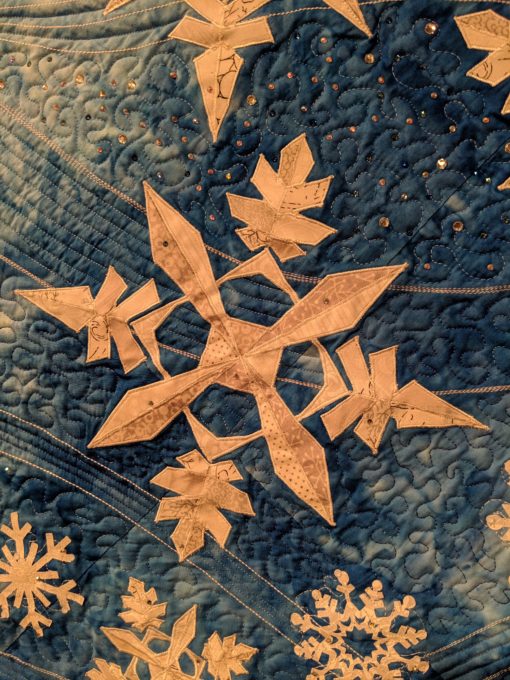
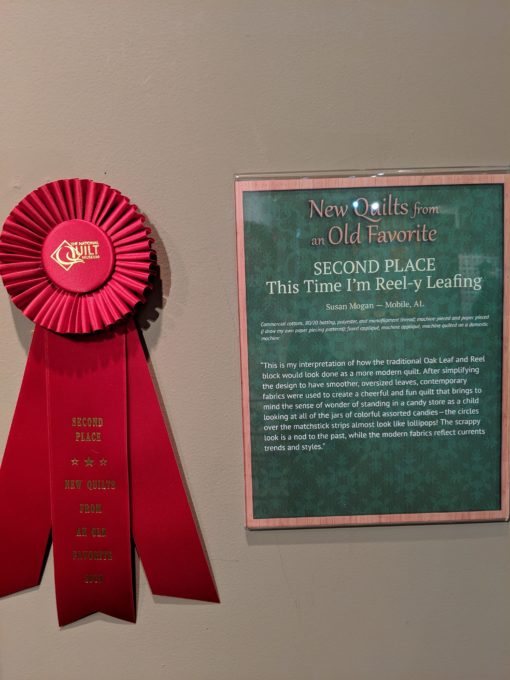
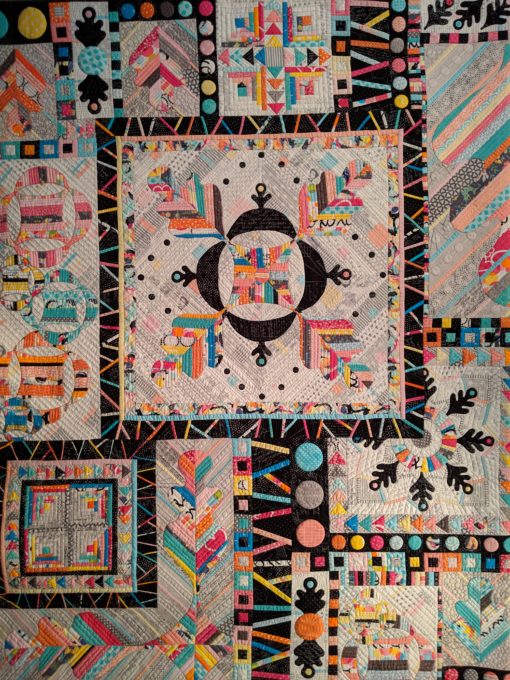
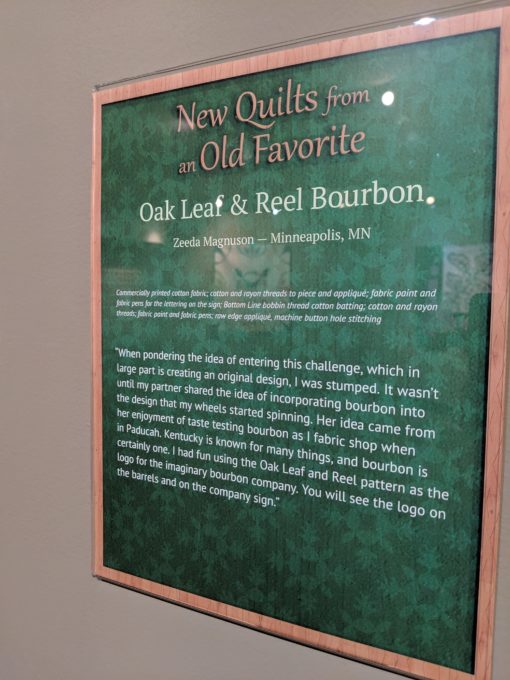
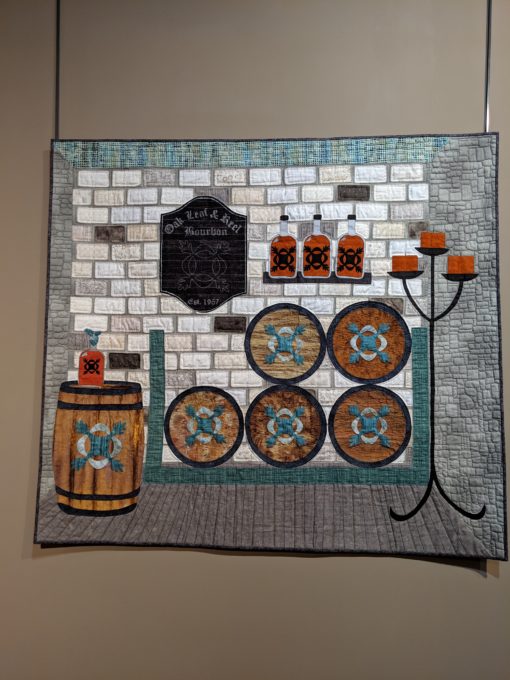
There’s an entire collection of miniature quilts. There are over 70 in the collection and while I was there a few were being retired and replaced to keep the collection fresh. You can’t touch any of the quilts. I have a picture here of my hand for a size comparison, but I wasn’t touching it.
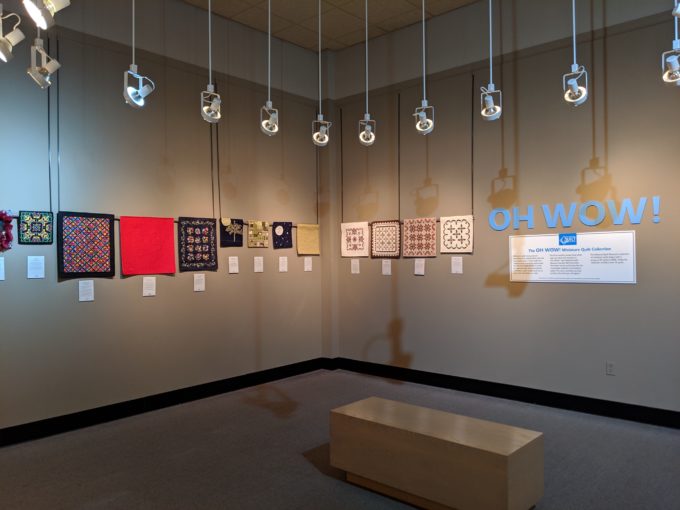
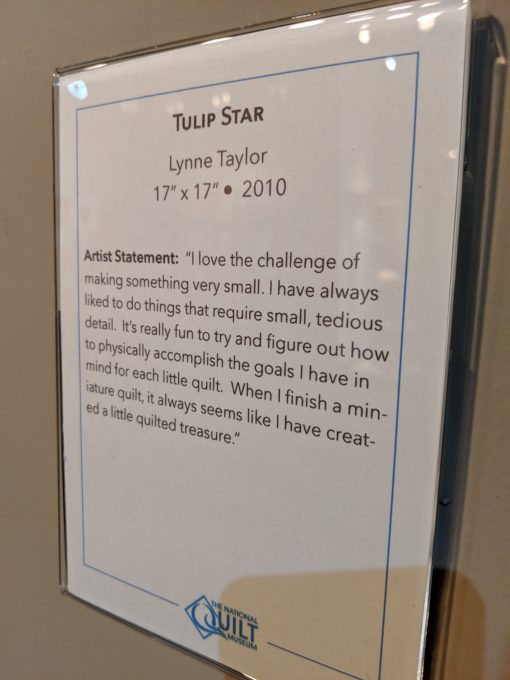
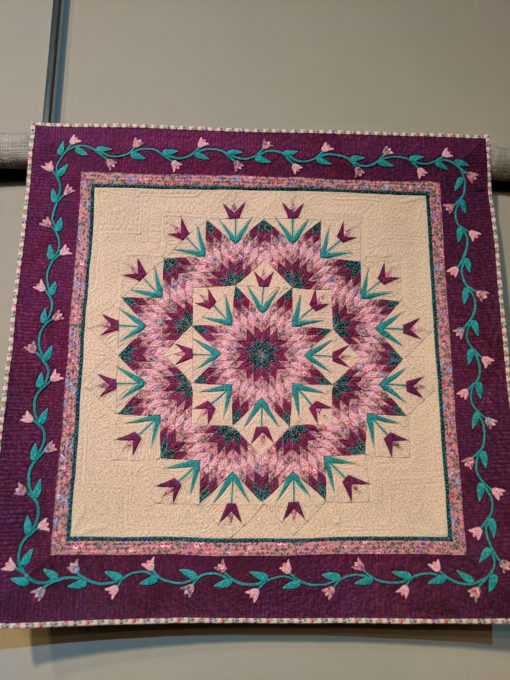
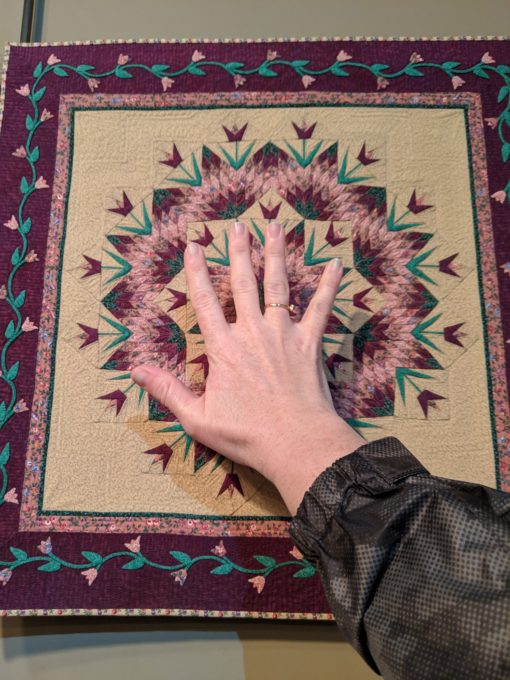
Then in a cabinet were even smaller quilts! What!? Tiny quilts for doll furniture!
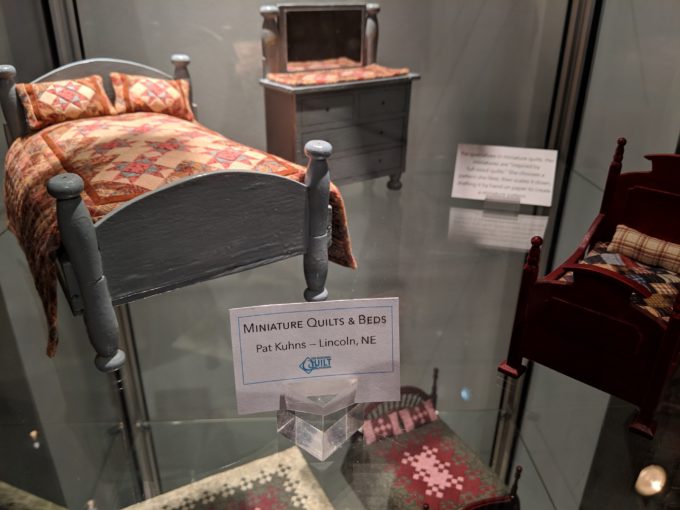
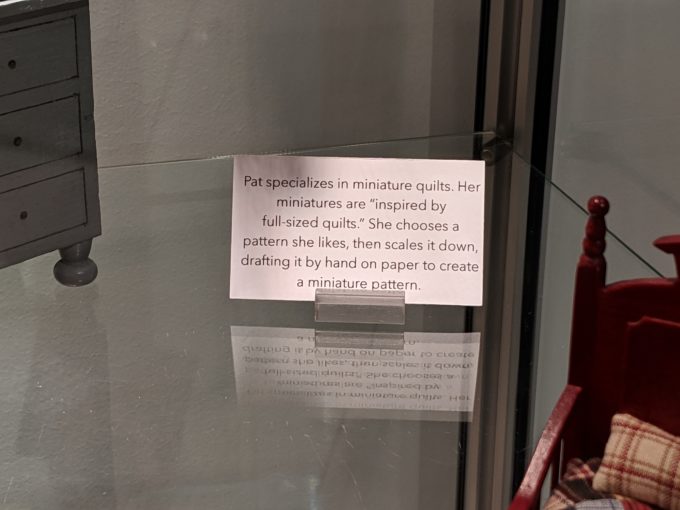
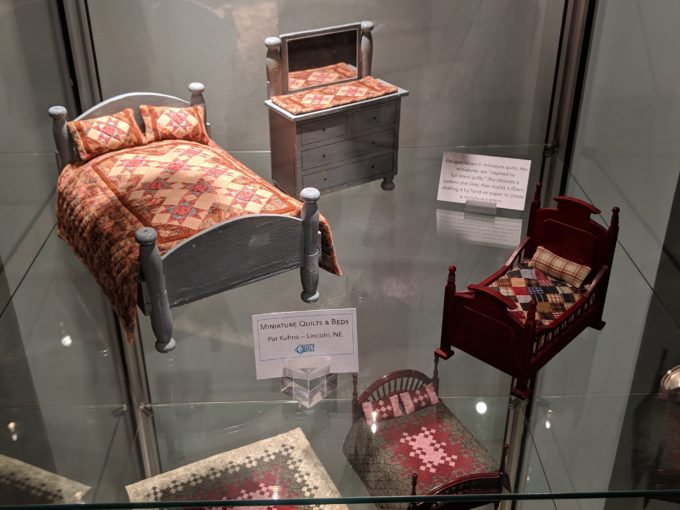

It was almost time to leave and Connie asked if I’d seen the competition quilts. I said that I had and she asked what I thought about them being 3D… Wait… What!?
She gave me a pair of 3D glasses and I ran (OK, walked appropriately for a quilt museum) back to the displays and sure enough… Many of the competition quilts look 3D! Sadly, it didn’t work for the pictures but you’ll just have to trust that those leaves and acorns stood out.
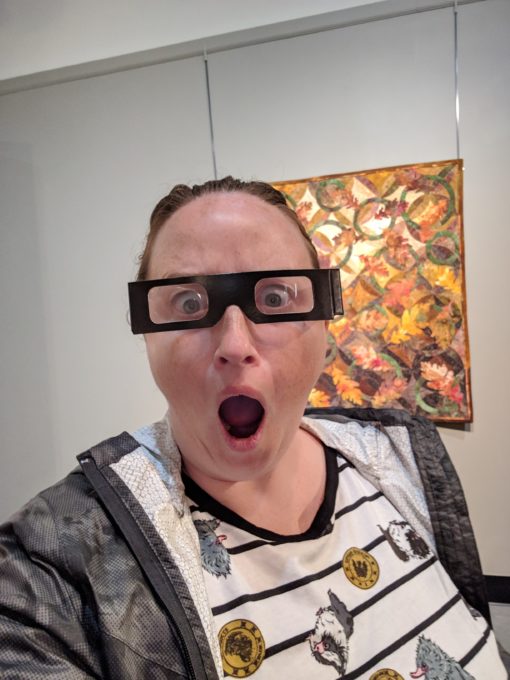


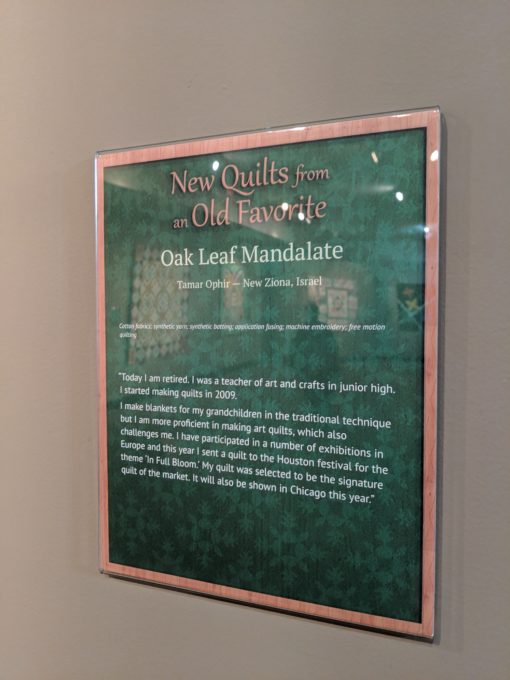
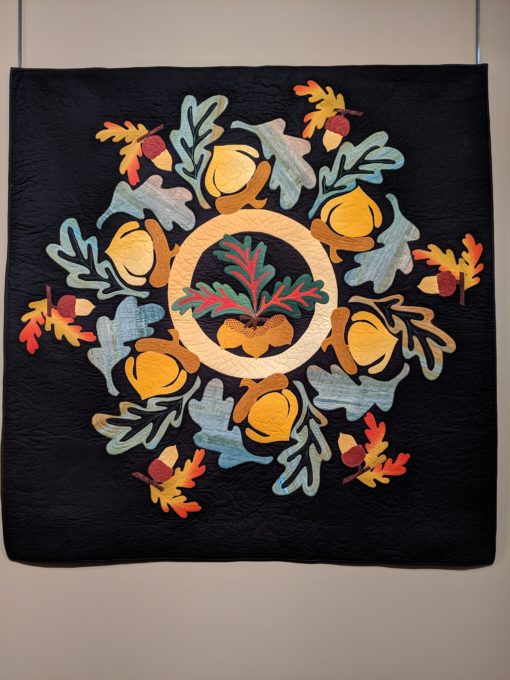
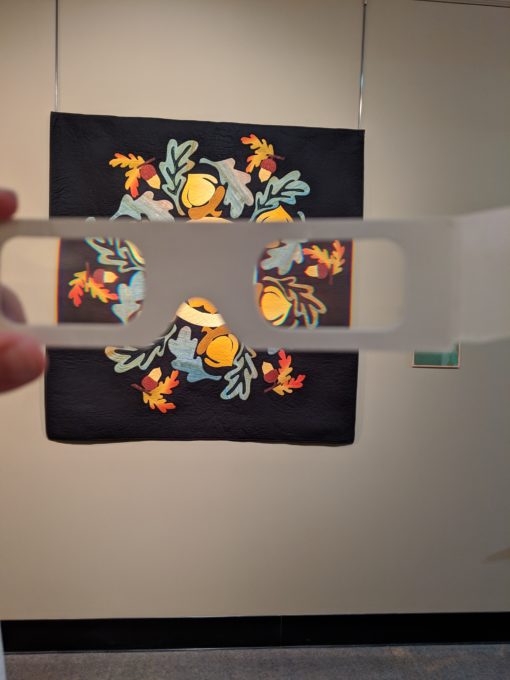
The final quilt to see is something really special. Look at the one below… isn’t it beautiful? Guess what? IT’S WOOD!!
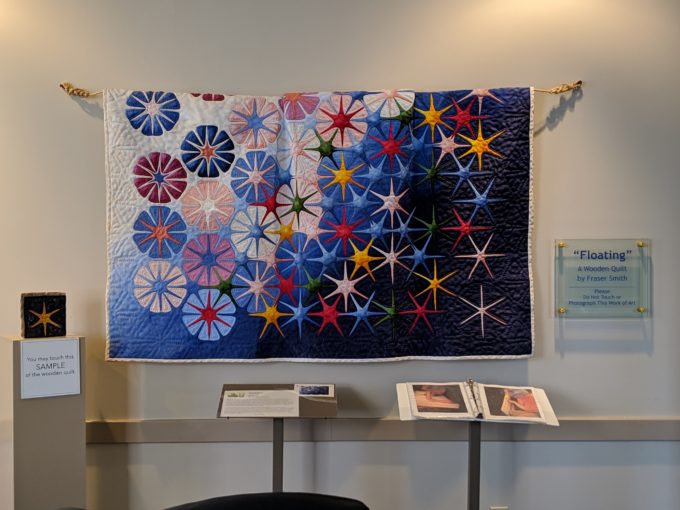
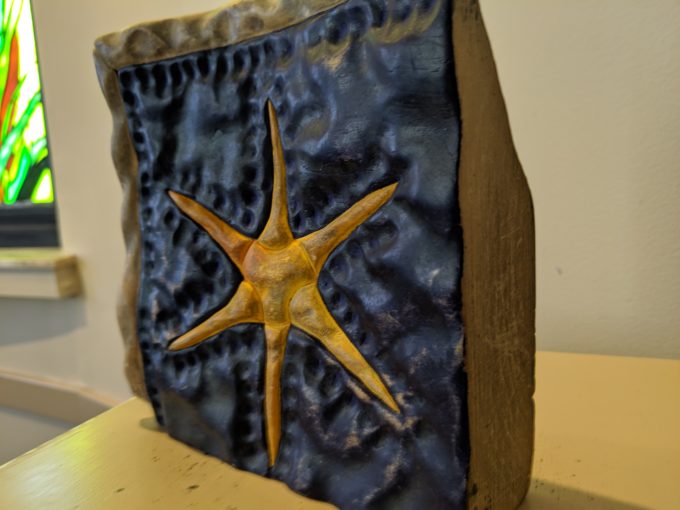
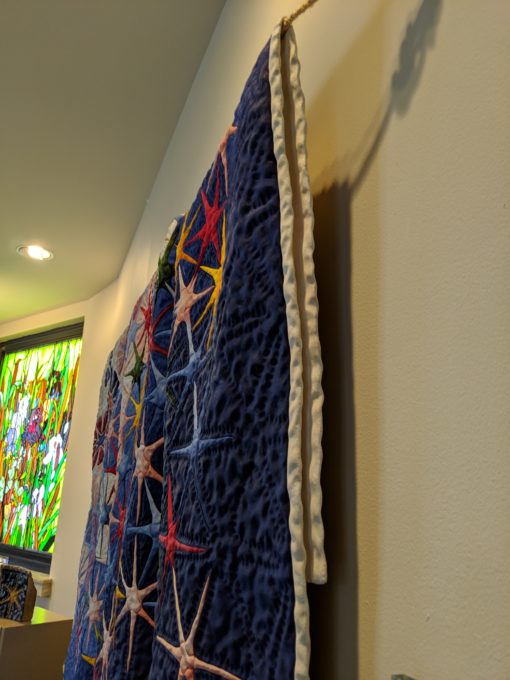
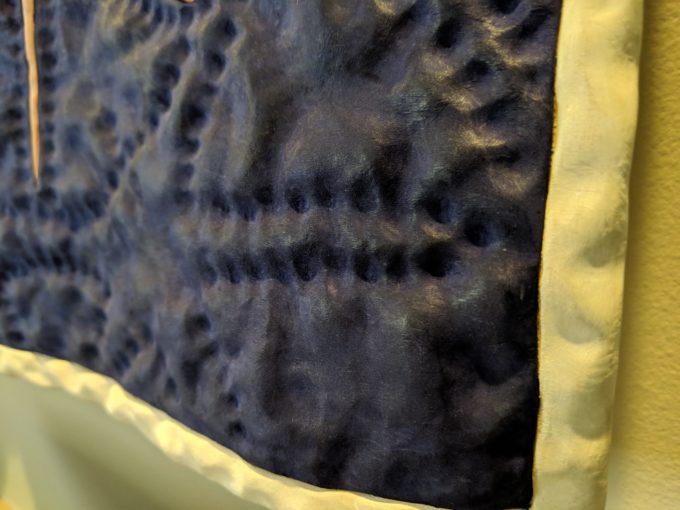
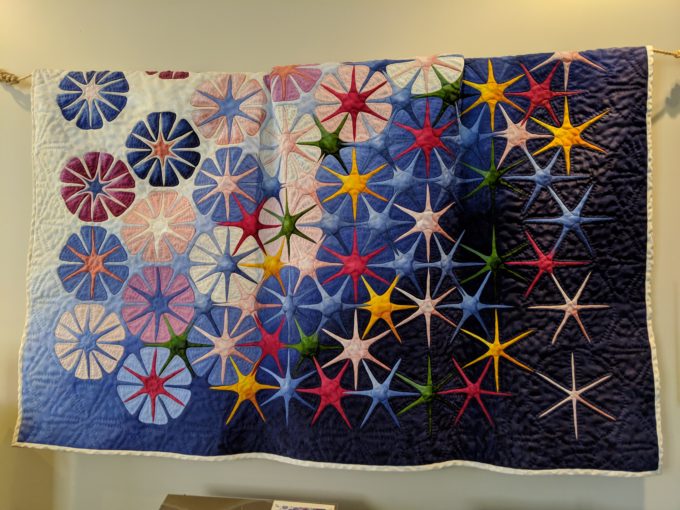
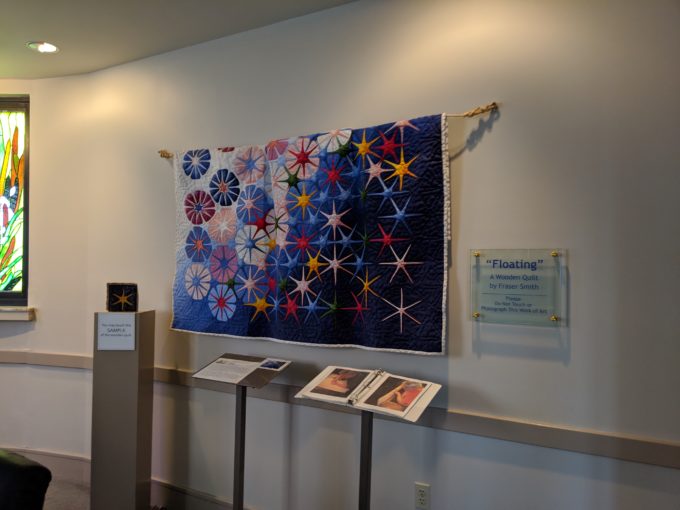
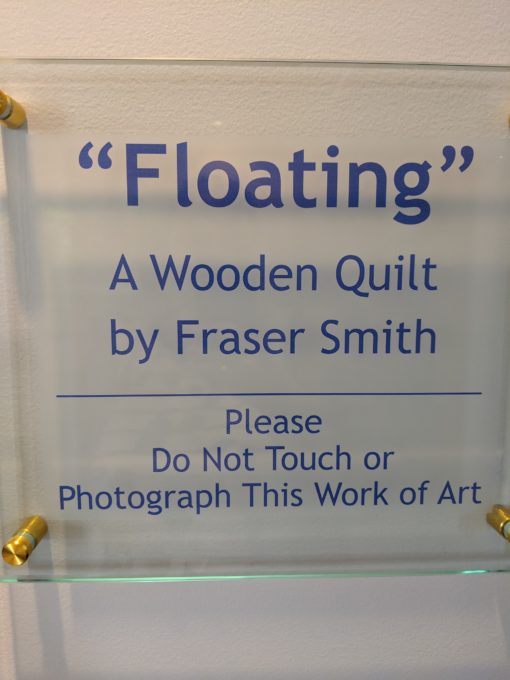
Please note: I didn’t touch or take a picture of the wooden quilt. However, Heather – who was covering the gift shop – said that was an old sign and I was welcome to take pictures (no touching though just like all the other quilts – but there is a block you can touch as seen above).
The gift shop was full of National Quilting Museum items and other quilting books, supplies and more.
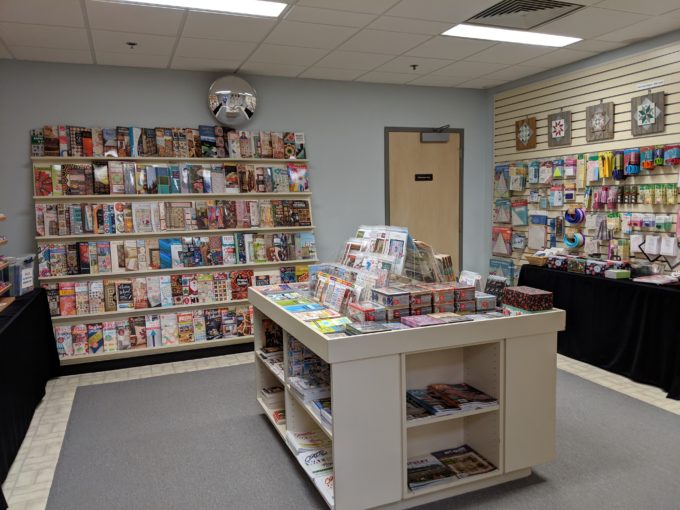
Final Thoughts
I HIGHLY recommend a visit to The National Quilt Museum in Paducah, KY. Even Stephen is regretting missing this experience. Don’t be like Stephen!
The National Quilt Museum Ticket Prices
As of April 2019, these were the ticket prices for The National Quilt Museum:
- Adults – $12
- Guided Tour Admission – $16
- Seniors (62+) – $11
- Students – $5
- Under 12 – Free with adult
My ticket cost $11 as I was able to save $1 with our AAA membership.
Address
The National Quilt Museum, 215 Jefferson St, Paducah, KY 42001
It looks fantastic 😊
You did a wonderful job of describing the museum and the exhibits! Bravo!!
Thanks for visiting! Our exhibits change every few months, so if you come again later this summer, there will be a whole new experience in the galleries. I’ve shared this blog post on our Facebook page.
Thank you so much for sharing. We had a wonderful visit.
Great post. I was there for the quilt show. The exhibits and museum were beyond my expectations. Well worth a visit for all art lovers.
Is that during Quilt week? We left right as it started.
wow…..lust lovely. I’ve already view (last ear)….but I want to see again.
Agreed. It’s such a great place.
Thank you for sharing these photos. We were on vacation headed to FL when realized how close the Museum was…..beginning to exit but then saw they weren’t open on Sunday and of course it was Sunday…..and returning home I was sick on the day we passed by. Too much fun snd sunshine I’m guessing. We had been there before but so enjoyed the exhibits you posted. Thank you.😊
Thank you for your comment. I’m glad you’ve been before. It’s so great!
I am from Australia and drove half way across America to visit the museum in 2013. While I enjoyed all the lovely displays and the talented work done by the quilt makers I was very disappointed the oldest quilt I could find was made in 1983- most were completed since 2000. I was expecting to see some of the history of quilt making and some civil war quilts (or at least phots) as I was keen to learn more of their history. I have just realised that one of your signs says that you are a museum for today’s quilters and I was sadly disappointed.
Thank you for your comment. I’m sorry you were disappointed. I wasn’t expecting history so I was very happy with what I saw but I could see how that would be disappointing if I’d had those expectations.
Overall a great tribute to this wonderful museum. I am a little disappointed that you didn’t show my quilt Hardika’s Dreams in the Oak Leaf and Reel Display as this is the quilt that the 3D glasses came with and that should have been noted. It is great that viewers looked at other quilts with the glasses too.
Thank you for your comment. Your quilt wasn’t specifically highlighted to me or I’d happily have shared it. I did look at them all though.
Best to contact the museum directly with your concerns as this post isn’t from the museum – it’s just our personal experience.
The quilt museum has the 3D glasses in a container just below the sign for my quilt. If you read the sign, it references the 3D glasses. None of the signs for the other quilts in the museum refer to the 3D glasses. It is your job as a reporter to report facts accurately and make a correction when needed.
Thank you for your comment. As I said you may want to contact the museum with your concerns. I was given my glasses at the front desk. I’m sorry that I didn’t see your quilt.
Now that you have more accurate facts, you could correct your blog. It was my original idea to make a quilt to be viewed with 3D glasses. I purchased the glasses and sent them along with my quilt. The makers of the quilts you referenced above had no idea that their quilts looked 3D as you imply in your blog above. I would think that you would want your writing to be as accurate as possible. I do understand that the front desk person could have given you better information but you now have the opportunity to correct your facts.
De bien belles pièces et beaucoup de patience et de talent….Congratulations!
I’ve been three times and every time the displays are different and worth seeing. As a quilting professional myself, I appreciate these quilts for their technical beauty as well as their artistic value. Everyone who visits leave knowing that quilts are ART!